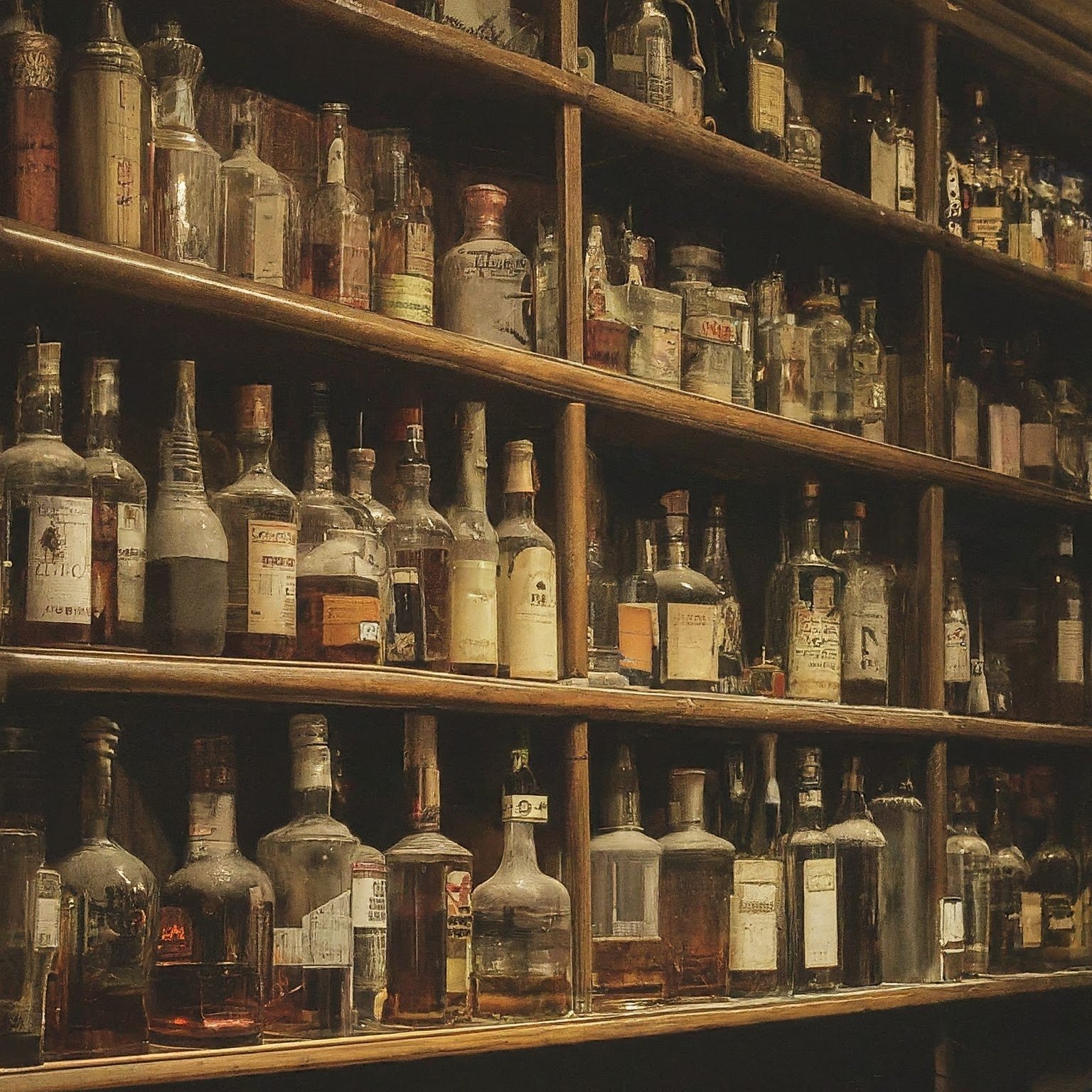
Whiskey 101 - Common Questions
How is whiskey distilled?
Whiskey is distilled through a meticulous process that transforms fermented grain mash into the rich and flavorful spirit we all know and love. The distillation process involves several key steps.
First, the chosen grains, such as barley, corn, rye, or wheat, are milled and combined with water to create a mash. The mash is then heated, activating enzymes that convert starches into sugars. This sugar-rich liquid, known as the "wort," is transferred to a fermentation vessel.
Next, yeast is added to the wort, kickstarting the fermentation process. Yeast consumes the sugars and converts them into alcohol, creating a low-alcohol liquid called "distiller's beer" or "wash." The wash is typically around 5-10% alcohol by volume.
The wash is then transferred to a still, a copper or stainless steel apparatus used for distillation. Inside the still, the wash is heated, and the alcohol vaporizes at a lower temperature than water due to its lower boiling point. The vapor rises into the still's neck, known as the "swan neck," and travels through the condensation process.
In the condenser, the alcohol vapor is cooled and returns to its liquid state, resulting in a high-proof spirit known as "new make spirit" or "white dog." This spirit is then aged in oak barrels to develop its distinct flavor and character over time.
Through careful control of the distillation process, distillers are able to craft a wide variety of whiskey styles, each with its own unique taste and characteristics. From single malt Scotch to bourbon, the art of distillation plays a crucial role in shaping the world of whiskey as we know it today.
What are the four main grains used in distilling?
The four main grains used in whiskey distillation are barley, corn, rye, and wheat. Barley is commonly used in single malt Scotch whiskies for its distinct malty flavor. Corn is a primary ingredient in bourbon and adds sweetness to the final product. Rye contributes a spicy and robust character, often found in rye whiskies. Wheat, known for its smoothness, is used in some bourbons and blended whiskies to create a softer, mellow profile. Each grain brings its unique qualities, allowing distillers to craft a wide range of whiskey styles to cater to different preferences and palates.
Does aging matter in whiskey?
The short answer is, yes. Aging plays a crucial role in the the flavors that make up our favorite whiskies. However, older is not necessarily better. Many consumers are drawn to labels that boast age statements such as 10, 12, 15, 20, even 30-year-old whiskies, which often correlate to a higher price tag. Typically, older whiskies have more of a tannic oak influence that many consumers love, but not all. It is important to find what notes you like in a whiskey to narrow down what products to choose from.
What does Bottled-In-Bond mean?
"Bottled in bond" is a labeling term used in the whiskey industry that signifies a specific set of regulations and quality standards. It means that the whiskey has been produced and aged in the United States, under government supervision, at a single distillery, during a single distillation season. It must be aged in a federally bonded warehouse for at least four years and bottled at 100 proof (50% alcohol by volume). This designation ensures the whiskey's authenticity, consistency, and higher quality. Bottled in bond whiskies are known for their robust flavors and adherence to traditional production methods, offering whiskey enthusiasts a mark of reliability and historical significance.
What is the difference between Bourbon, Rye Whiskey, and Single Malt Whiskey?
Bourbon, rye whiskey, single malt whiskey, and Scotch are all types of whiskey, but they have distinct characteristics that set them apart[1][3][4].
Bourbon is an American whiskey made from at least 51% corn, giving it a sweeter flavor profile with notes of vanilla, caramel, and oak. It must be produced in the United States, aged in new charred oak barrels, and distilled to no more than 80% alcohol by volume (ABV)[1][3].
Rye whiskey is made from at least 51% rye grain, resulting in a spicier and more peppery flavor compared to bourbon. American rye whiskey follows similar production rules as bourbon, while Canadian rye whiskey has more flexible regulations[1][3][4].
Single malt whiskey refers to a whiskey made from 100% malted barley at a single distillery. While often associated with Scotch, single malt whiskeys can be produced anywhere in the world. They are typically distilled in copper pot stills and aged in oak barrels[2][6].
Scotch is a whisky (spelled without an 'e') produced exclusively in Scotland. It must be made from malted barley, aged for at least three years in oak barrels, and bottled at a minimum of 40% ABV. Scotch is known for its distinctive smoky flavor, which comes from the use of peat during the malting process[1][6].
The main differences lie in their ingredients, production methods, and geographical origins. Bourbon and rye are primarily American whiskeys, with bourbon being sweeter due to its corn content and rye being spicier. Single malt whiskey can be made anywhere but must use only malted barley from a single distillery. Scotch is exclusively made in Scotland and is characterized by its smoky flavor profile[1][2][3][4][6].
Citations:
[1] https://www.kilchomandistillery.com/distillery-news/what-are-the-differences-between-scotch-bourbon-and-rye/
[2] https://www.liquor.com/scotch-vs-american-single-malt-whiskey-7968350
[3] https://www.liquor.com/bourbon-vs-rye-whiskey-6541248
[4] https://limestonebranch.com/blog/the-differences-between-rye-whiskey-and-bourbon/
[5] https://www.themixer.com/en-us/learn/rye-vs-bourbon/
[6] https://www.seriouseats.com/what-is-single-malt-scotch-what-is-blended-whisky
[7] https://labs.blogs.com/its_alive_in_the_lab/2021/12/what-are-the-differences-among-whiskey-bourbon-and-rye.html
[8] https://www.eater.com/2019/9/13/20863778/whats-the-difference-whiskey-scotch-bourbon-rye.


The Results
“Whatever it is, the way you tell your story online can make all the difference.”
— Quote source
